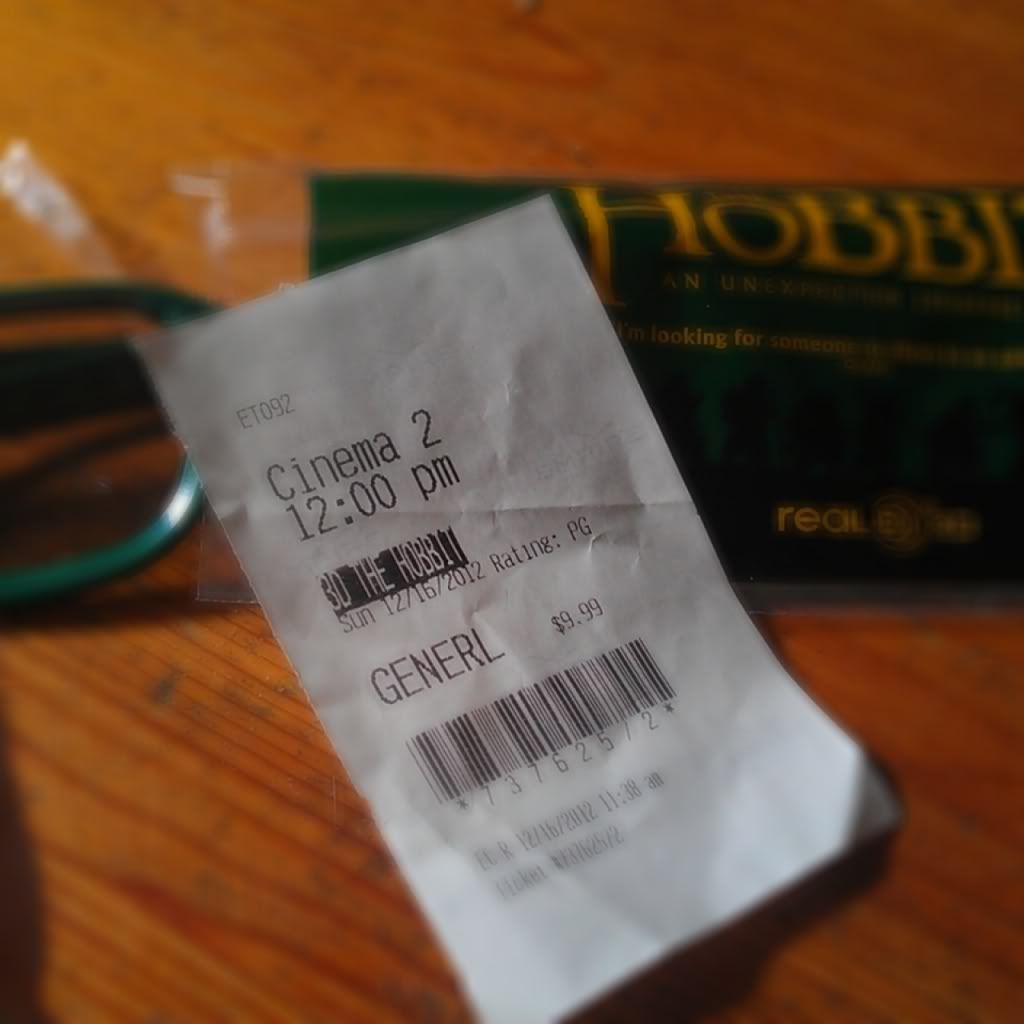I’m going to make the assumption that whoever reads this review will be somewhat acquainted with The Hobbit and other works of J.R.R. Tolkien. From my most recent experience, I have discovered that most people who are seeing The Hobbit or have seen Lord of the Rings are diehard Tolkien fans; most have likely read the books.
The Hobbit, as precursor for LotR is an interesting novel and
makes for a rollicking good movie. While
LotR is full of weightier elements, The Hobbit was clearly written for
children. Bilbo is a likeable hobbit who
is swept away on an adventure by Gandalf and the merry troupe of dwarves.
LotR fans have been
waiting for The Hobbit for many years. Return
of the King debuted in 2003, which gives us a whopping 9 years of anticipation
slowly growing. Peter Jackson did an
incredible job with the CGI and artistic look of LotR, so expectations have
been high for The Hobbit.
In the span of the years
following LotR, 3D has become a popular way of creating and watching
movies. Personally I’ve never been hugely
supportive of it as I occasionally find it distracting. However, when Matt and I went to see The
Hobbit this past weekend, I was pleased to discover that the 3D was not choppy
or obviously used. For example, in
scenes of the dwarfs sitting around the table talking, the dwarves closest to
the camera were 3D, popping out from the screen, making the table look deeper
without 3D affecting the actual table.
Camera shots starting from high up in the air and panning down were
breath taking and the 3D complimented it greatly; I was literally catching my
breath during some of the angles sweeping through caverns, things popping out
at you in 3D.
So the 3D was well done
and the graphics were phenomenal. I don’t
see that fans could be disappointed by Jackson Jackson seemed
to use the locations more, perhaps to exhibit the distance that Bilbo and
Company were travelling, from the Shire to the Lonely Mountain
In a way, it seems as
though Jackson
The plot changes will
undoubtedly be the biggest issue among Tolkien purists--I had just re-read the
book last week so I had it fresh in my mind and was able to compare it to the
movie. I could definitely understand why
some viewers would be a little upset with some changes that were made, even
though I believe that most people prepared themselves for that. There was no way Jackson
The biggest question I had
with these issues was: why did Jackson
With the introduction of
these characters, Jackson Jackson
Bilbo is still charming
and the dwarves are their typical churlish selves. In one scene Bilbo wins over the hearts of
the dwarves by throwing himself out in front of Thorin in a brave attempt to
save his life; such a scene does not exist in the books and it was the most
irksome to me. Another annoying moment
was the change to the troll situation:
in the novel the dwarves and quickly and neatly bagged up by the trolls
but in the movie there is an all out rumble between them all. What was the point of changing that
scene? I still don’t know… It’s the
small changes that were most irritating instead of the addition of entirely new
characters.
Other than that, I can
honestly say that I didn’t truly mind the liberties that Jackson Jackson
What will perhaps enrage purist viewers the most is the change of Radagast the Brown's character. From what I recall, Radagast was a wizard similar in power to Gandalf the Grey, except that he was content to busy himself with nature, being wiser than any man in things concerning herbs and beasts. Gandalf refers to him in the books as his confident and "cousin". In the movie, Jackson turns Radagast into a bumbling wizard, changing him from being wise to being the comic relief. I'm sure some people may be understandably offended by the changes.
What will perhaps enrage purist viewers the most is the change of Radagast the Brown's character. From what I recall, Radagast was a wizard similar in power to Gandalf the Grey, except that he was content to busy himself with nature, being wiser than any man in things concerning herbs and beasts. Gandalf refers to him in the books as his confident and "cousin". In the movie, Jackson turns Radagast into a bumbling wizard, changing him from being wise to being the comic relief. I'm sure some people may be understandably offended by the changes.
I gave The Hobbit 8.5/10,
even though I waver at times and consider it to be a 9. The small changes Jackson





No comments:
Post a Comment